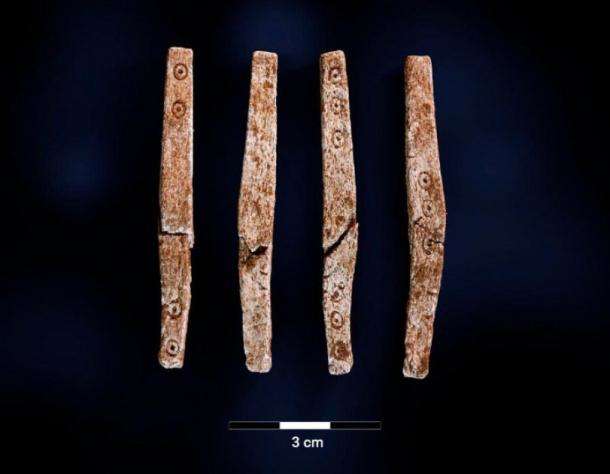Create a free profile to get unlimited access to exclusive videos, sweepstakes, and more!
Yahtzee! Rare 2000-year-old Roman Iron Age die and game pieces unearthed in Norway

Leisure time amusements meant mostly for the ultra-rich that date back to Iron Age Roman society were recently unearthed by a team of Norwegian archaeologists from the University Museum of Bergen.
School scientists were excavating relics within the boundaries of a tiny Early Iron Age burial cairn located close to the village of Ytre Fosse in western Norway when the rare board game pieces were discovered.
Amid the rubble of broken pottery fragments and charred glass,13 whole and five broken game chips were found alongside a nearly intact elongated die. These scarce gaming specimens are exceedingly rare and date back to the Roman Iron Age circa 300 AD. Bone shards, decorated pottery, and scorched glass tell researchers that the person cremated and buried in the grave was probably a member of the upper class.
"This is wonderfully exciting," said Morten Ramstad of the Bergen University Museum. "Such discoveries have not been made so many times before in Norway or Scandinavia. The special thing here is that we have found almost the whole set including the dice."
The playtime remains were uncovered in the vicinity of the Alverstraumen strait, which was a vital location on the ancient sea trading route called Nordvegen (The Northern Way), running between the north and south of Norway.
Altogether, fewer than 15 of these gaming-type artifacts have ever been discovered in Norway. Similar dice were found in the famous Vimose weapon-sacrificing site at Fyn in Denmark back in 1850-1860. At Vimose, the gaming board was also complete, allowing for a time-capsule view into Early Iron Age board games played between Germanic tribes residing in Scandinavia.
Likely inspired by the Roman game of Ludus latrunculorum, these primitive board games seem to have been used by the elite of Roman Iron Age Scandinavia, and were the predecessors of the more well-known Viking Age (AD 750-1050) board game of Hnefatafl.
Tafl games represent a family of old Nordic and Celtic strategy board games descended from a variant of Greek amusements known by the names of Petteia, pessoí, poleis, and pente grammaí, all enjoyed on a two-sided checkered or latticed gameboard.
"These are status objects that testify to contact with the Roman Empire, where they liked to enjoy themselves with board games," Ramstad adds. "People who played games like this were local aristocracy or upper class. The game showed that you had the time, profits and ability to think strategically. Finding a game that is almost two thousand years old is incredibly fascinating. It tells us that the people then were not so very different from us."
Upon examination, the ancient die is scored with several marks known as circumpuncts (dot in circle symbols), which carry the numerical values zero, three, four, and five. Leisure artifacts such as these treasures were employed in the Viking Age for simple fun, strategic mental training, or just to pass the time on epic sea odysseys between spinning yarns of heroic sagas.
"This excavation connects Norway to a larger network of communication and trade in Scandinavia," archaeologist Louise Bjerre told Life In Norway. "At the same time, the findings can help us to understand the beginnings of the Iron Age in Norway."
These archaic gaming pieces and the die are currently under further investigation and preservation procedures at the University's laboratory in Bergen. The priceless bones and other rare objects from the burial mound will soon be on display to the public at the University of Bergen's Department of Cultural History Museum.





























